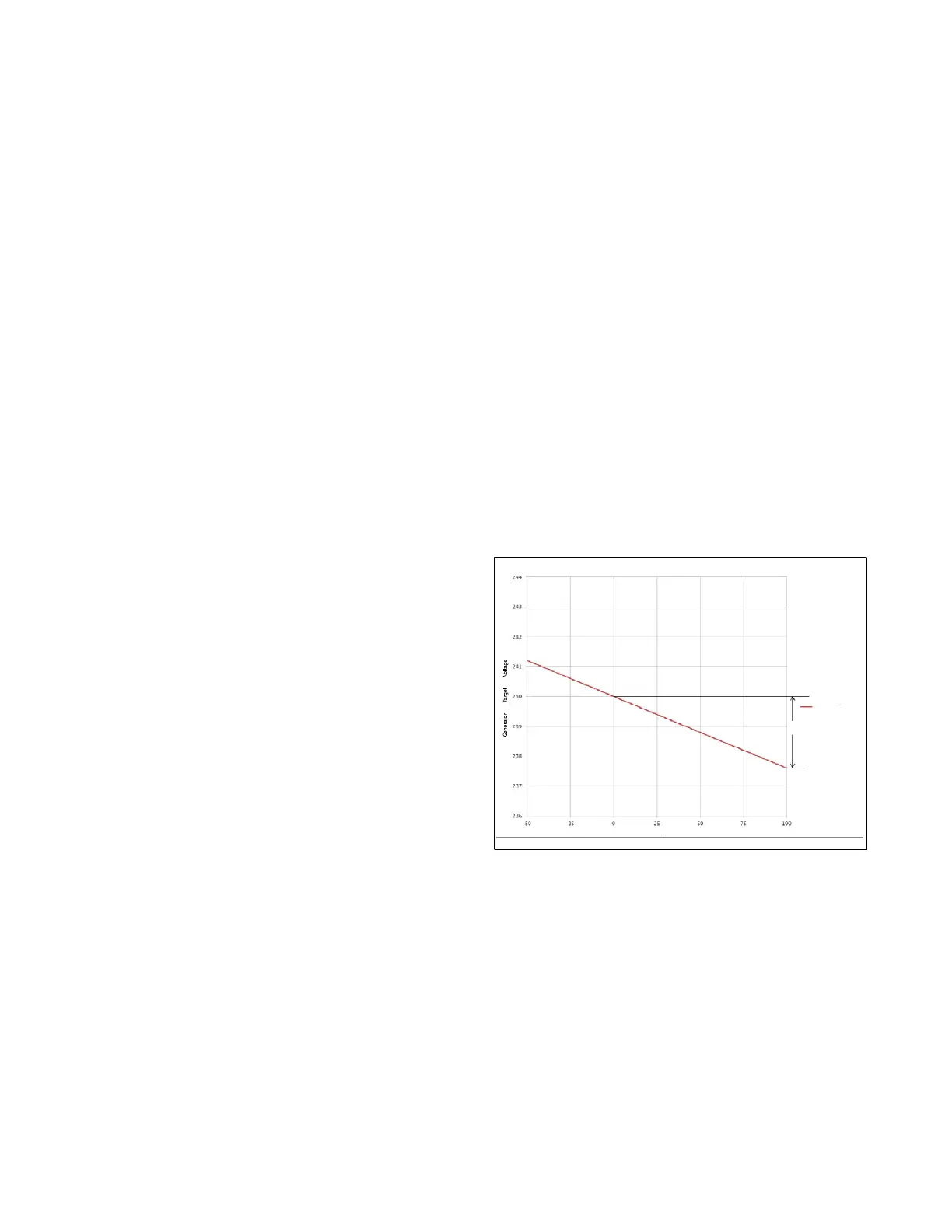224 Section 12 Paralleling System Information TP-6953 7/19
D Torque Sharing Derivative Gain
The Torque Sharing Derivative Gain determines the
contribution of the torque sharing derivative term to the
speed bias. The derivative term is directly related to
the rate of change in the difference between the
average percent mechanical loading of all gens on the
bus and the percent mechanical loading of this
individual generator. The derivative term increases the
speed bias when the difference between the average
bus load and the average generator load increases.
Range: 0.01 – 100.00
Default: 1.00
D Frequency Trim Proportional Gain
The Frequency Trim Proportional Gain determines
the contribution of the frequency trim proportional
term to the speed bias. The proportional term is
directly related to the difference between the target
speed bias (typically 0) and the actual speed bias.
The proportional term increases the speed bias when
the speed bias is negative.
Range: 0.01 – 100.00
Default: 1.00
D Frequency Trim Integral Gain
The Frequency Trim Integral Gain determines the
contribution of the frequency trim integral term to the
speed bias. The integral term ramps at a rate directly
related to the difference between the target speed
bias (typically 0) and the actual speed bias. The
integral term increases the speed bias when the
speed bias is negative.
Range: 0.01 – 100.00
Default: 1.00
D Frequency Trim Derivative Gain
The Frequency Trim Derivative Gain determines the
contribution of the frequency trim derivative term to
the speed bias. The derivative term is related to the
rate of change of the difference between the target
speed bias (typically 0) and the actual speed bias.
The derivative term increases the speed bias when
the speed bias decreases.
Range: 0.01 – 100.00
Default: 1.00
Reactive Load Sharing
D Reactive Droop Slope
This controls the rate a t which the target voltage of the
voltage regulator decreases with increasing reactive
load. Reactive Droop is intended to permit alternators
to share reactive load in paralleled applications when
there is no communication between the generator
controllers. See Figure 12-7.
If the reactive load on a given generator decreases,
the target voltage will increase, resulting in a decrease
in field current, causing a decrease in reactive power
output. The remaining reactive load will be supplied by
other generators in the paralleling system, which will
cause their target voltage to decrease slightly. The
generator system will share reactive load relati ve ly
evenly if they operate in droop mode, but the system
voltage will vary with reactive load.
Note: Paralleling systems typically require
reactive droop to remain stable, as the
voltage reacts much more quickly than the
engine speed. The Voltage Trim is equipped
to compensate for the reactive droop over
time.
2.4V = 1%
1% Droop @ 240V
Generator Reactive Load (% of rated capacity)
Range: 0.0% – 20.0%
Default: 1.0%
Figure 12-7 Reactive Droop Slope

